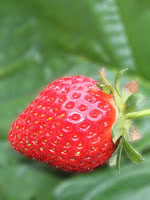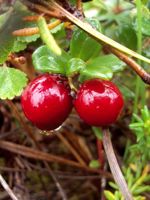Mon-Fri 9am - 5pm Mountain time
Honeoye Strawberry vs Small Cranberry
Fragaria x ananassa Honeoye
Vaccinium oxycoccos
NOT AVAILABLE THIS SEASON - MIGHT RETURN
CUSTOM GROW
The Honeoye Strawberry is a cold-hardy cultivar that produces large, sweet berries that feature an attractive bright-red color. It blooms with small white flowers and commonly it is a top-selling berry on the market due to its winter hardiness, highly productive crops and self-pollinating nature.
The Honeoye Strawberry is a June Bearing (Short Day) variety, meaning that they typically produce a single, large crop earlier in the season.
The Honoeye Strawberry received the Garden Merit Award of the Royal Horticultural society.
Small Cranberry is a native evergreen groundcover found in bogs, fens, and wet meadows. It produces delicate pink flowers that attract a variety of pollinators, including bees, and it serves as both a nectar source and host plant for the Bog Fritillary (Boloria eunomia) butterfly. By late summer, the plant bears deep red berries that are eaten by both wildlife and people. With their high pectin content, the berries are well-suited for making jams and jellies.
Often creeping among sphagnum moss, Small Cranberry thrives in cold, acidic, and nutrient-poor soils (pH 2.9–4.7), making it well adapted to northern wetland environments. With its woody stems, it is technically classified as a shrub and often described as a subshrub or dwarf shrub. It is also valuable for wetland restoration and naturalisation projects.
Note: We use Small Cranberry for Vaccinium oxycoccos. This species is also known by many other common names, including Bog Cranberry, Small Bog Cranberry, and others. Please confirm the scientific name to ensure you are ordering the correct plant.

